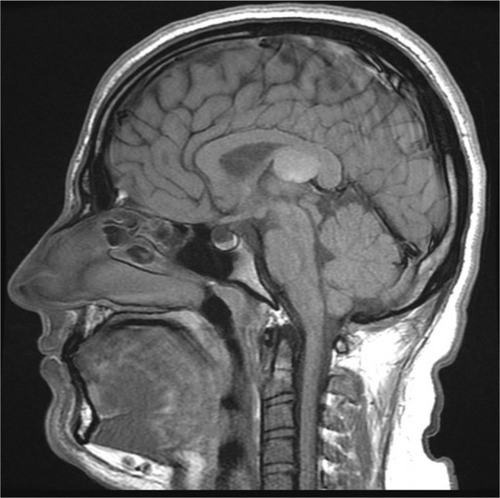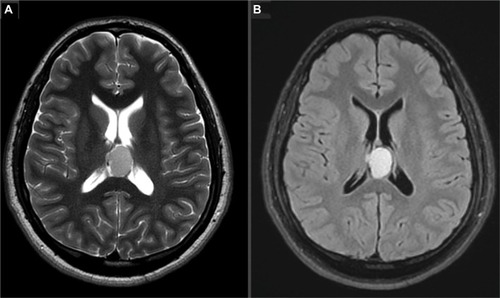Figures & data
Figure 1 Mid-sagittal T1-weighted image of the brain shows a well-defined, rounded lesion at the roof of posterior third ventricle exhibiting low to intermediate signal intensity relative to the gray matter, with layering at the dependent portion.

Figure 2 Axial T2-weighted (A) and fluid-attenuated inversion recovery (FLAIR) (B) images of the brain showing a well-defined, rounded lesion at the posterior part of the third ventricle.


